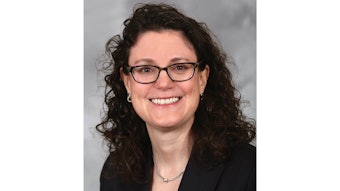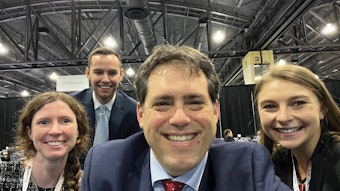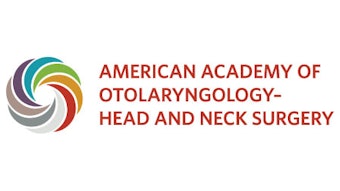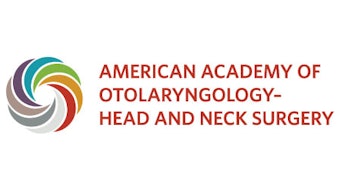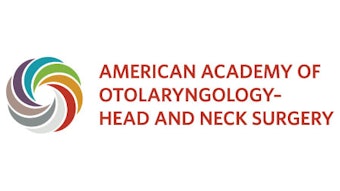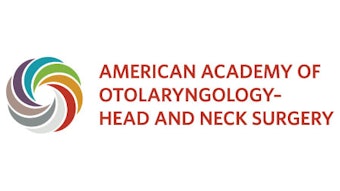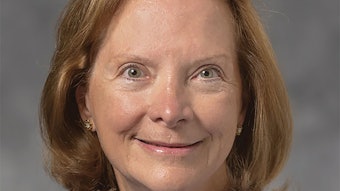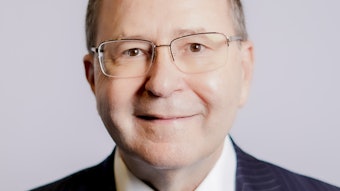FROM THE EDUCATION COMMITTEES | Adult Hearing Screening: How Population Health, Legislation, and Research Gaps Influence Clinical Medicine
Data suggest hearing loss (HL) is the third most common disease of adulthood, currently affecting one in three individuals between 65 and 74 years, and half of those 75 years and older.
Maura Cosetti, MD, Chair, Otology and Neurotology Education Committee

Data suggest hearing loss (HL) is the third most common disease of adulthood, currently affecting one in three individuals between 65 and 74 years, and half of those 75 years and older.2,3 With increasing longevity, estimates suggest the disease burden will reach 2.5 billion people worldwide in 2050.4 HL is often gradual, insidious, and routinely diagnosed in adults who do not actively report “difficulty hearing.” The widespread prevalence, unrecognized symptomatology, effective treatment options, and well-documented associations with quality of life (QOL), independence, fall risk, social isolation, and cognitive decline appear to make HL a perfect fit for routine screening. To unpack why the USPSTF did not come to agreement with their recent ruling requires understanding how epidemiology, legislation, and research gaps influence clinical medicine around HL.
Epidemiologists define screening as identification of presympomatic patients who may benefit from early diagnosis and treatment.5 For more than 20 years, the U.S. Congress has tasked the Agency for Healthcare Research and Quality (AHRQ) to convene the USPSTF, a volunteer group of experts in prevention, evidence-based medicine, and primary care. Using a repeatable and well-established framework, this group evaluates existing peer-reviewed literature to make screening recommendations for the primary care setting.6
The USPSTF HL recommendation was guided by a key question: Would detection of undiagnosed HL in an adult population make treatment easier or more effective at reducing proximal and long-term morbidity? (For this review, treatment included hearing aids and PSAPs [personal sound amplification products], and excluded cochlear or bone-anchored implants.) The group’s review focused on a series of crucial factors: identification of the most at-risk adult population; availability of a reliable, rapid screening test appropriate for the primary care setting; and available data documenting the benefits of treatment on QOL and health-related morbidity. In each of these categories, the task force identified major gaps in existing hearing loss research—gaps that ultimately limited its ability to endorse screening.
To start, the task force concluded more data are required to identify the population that would benefit most from screening, including age, race/ethnicity, past noise exposure, and comorbid conditions such as depression, mild cognitive decline, and diabetes. Regarding screening tool(s), it reviewed publications on primary care–relevant screening tests, including whispered voice, finger rub, single questions (“Do you have difficulty with your hearing?”), longer patient questionnaires (the Hearing Handicap Inventory for the Elderly–Screening [HHIE-S]), and handheld and tablet-based tone-emitting devices.7 While there is adequate evidence that screening tools can detect HL, the group felt these tests “may not identify persons who will find [assistive listening] devices helpful and use them.”1 This comment highlights a crucial—and recognizable—challenge in current hearing healthcare: Would identification of HL necessarily spur an individual to pursue treatment. Even among individuals with confirmed HL, uptake of hearing aids among adults is less than 20%.8 From a public health perspective, failure to seek additional workup equates with a failed screen. Given the many current barriers to treating HL, such as cost, access, stigma, and confidence that treatment would reduce long-term morbidity, many individuals who screen positive for HL may not move on to treatment.
In their JAMA Network Open editorial, Deal and Lin highlight legislative efforts by the National Academy of Medicine and others to improve the accessibility and affordability of hearing devices and suggest these changes may shift the hearing landscape toward greater treatment adoption.9 They note ongoing research, such as the ACHIEVE trial, will soon provide data on the long-term impacts of treatment on morbidity, such as dementia.10
“While awaiting further research, it is reasonable that primary care physicians adopt a more nuanced approach, grounded in clinical judgement,” suggest Yueh and Piccarillo in their 2021 JAMA editorial.11 Questions targeting functional loss and motivation to seek treatment (“How bothered are you by your hearing loss?” “How motivated are you to do something about it?”) may identify those with the greatest potential for treatment benefit, in both primary and specialty care settings.
While the USPSTF did not find sufficient evidence to support adult hearing screening, its spotlight on various research gaps provides a useful road map toward improvement of hearing healthcare in the future. Various multidisciplinary groups, notably the Hearing Health Collaborative, led by ONEC member Matthew L. Carlson, MD, and Sarah Sydlowski, PhD, AuD, MBA, are systematically targeting these research gaps to advance treatment guidelines and public policy on hearing care, in connection with healthy ageing.12 Future rereview by the USPSTF will hopefully reflect an improved understanding of the clinical, epidemiologic, and population-health landscape for adult HL.
References
- US Preventive Services Task Force. Screening for hearing loss in older adults: US Preventive Services Task Force Recommendation statement. JAMA. 2021 Mar 23;325(12):1196-1201. doi: 10.1001/jama.2021.2566. PMID: 33755083.
- Blackwell DL, Lucas JW, Clarke TC. Summary health statistics for U.S. adults: National Health Interview Survey, 2012. Vital Health Stat 10. 2014;(260):1-161.
- Zelaya CE, Lucas JW, Hoffman HJ, MMWR QuickStats: Percentage of adults with selected hearing problems, by type of problem and age group—National Health Interview Survey, United States, 2014. MMWR. 2015;64(37):1058. https://www.cdc.gov/mmwr/preview/mmwrhtml/mm6437a8.htm
- World Health Organization. World report on hearing. 2021.
- Celentano DD, Szklo M, Gordis L. Gordis Epidemiology. 6th ed. Elseiver; 2019 .
- U.S. Preventive Services Task Force. https://uspreventiveservicestaskforce.org/uspstf/about-uspstf
- Lichtenstein MJ, Bess FH, Logan SA. Validation of screening tools for identifying hearing-impaired elderly in primary care. JAMA. 1988;259(19):2875-2878. doi:10.1001/jama.1988. 03720190043029
- Chien W, Lin FR. Prevalence of hearing aid use among older adults in the United States. Arch Intern Med. 2012; 172(3):292-293. doi:10.1001/archinternmed.2011.1408
- Deal JA, Lin FR. USPSTF Recommendations for hearing loss screening in asymptomatic older adults—a case of missing evidence and missing treatment options. JAMA Network Open. 2021 Mar 1;4(3):e210274. doi: 10.1001/jamanetworkopen.2021.0274. PMID: 33755162
- Deal JA, Goman AM, AlbertMS, et al. Hearing treatment for reducing cognitive decline: design and methods of the Aging and Cognitive Health Evaluation in Elders randomized controlled trial. Alzheimers Dement (N Y). 2018;4:499-507. doi:10.1016/j.trci.2018.08.007
- Yueh B, Piccirillo JF. Screening for hearing loss in older adults: insufficient evidence does not mean insufficient benefit. JAMA. 2021 Mar 23;325(12):1162-1163. doi: 10.1001/jama.2021.2020. PMID: 33755056.
- Hearing Health Collaborative. https://adulthearing.com/hearing-health-collaborative/

